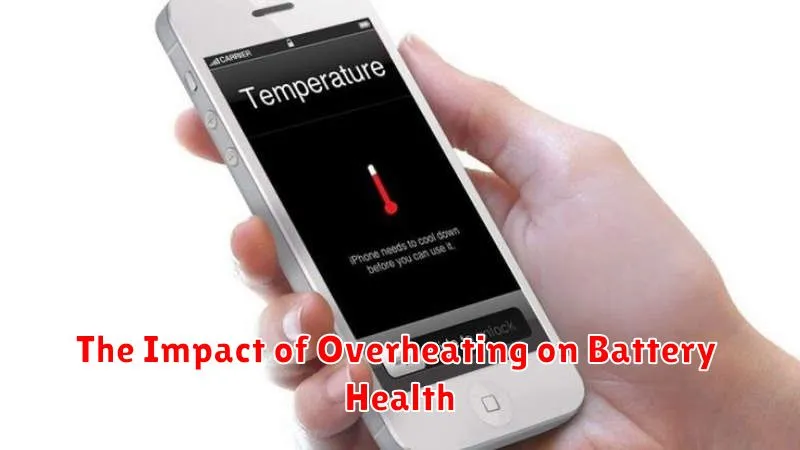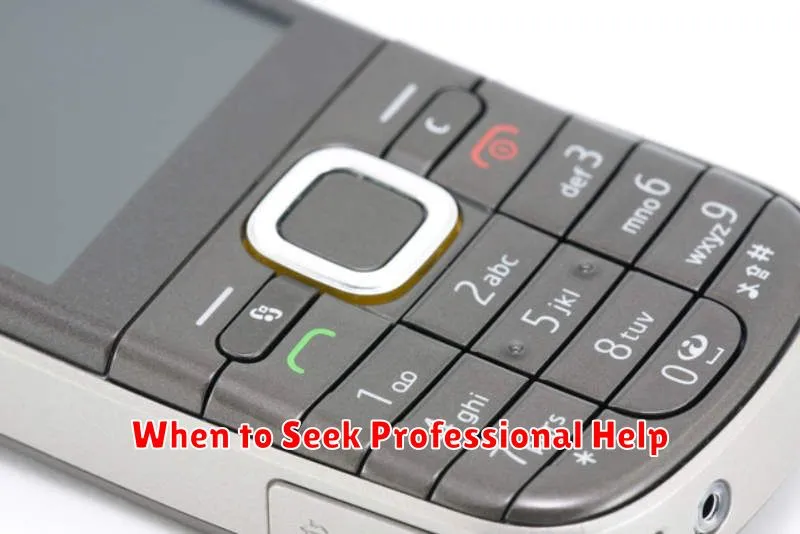Experiencing an overheated phone can be incredibly frustrating, especially when you rely on it constantly. Excessive heat can not only drain your battery rapidly but also potentially damage your device’s internal components. While powering off your phone is a common solution, it’s not always feasible if you’re in the middle of something important. This article will explore practical tips and tricks to effectively cool down your overheated phone without resorting to powering it off, allowing you to continue using your device safely and efficiently.
From identifying common causes of phone overheating, such as demanding applications and prolonged gaming sessions, to implementing simple yet effective cooling solutions, we’ll cover a range of strategies to manage your phone’s temperature. Learn how to quickly lower your phone’s temperature and prevent future overheating incidents with these valuable tips and tricks. Keep your phone running smoothly and avoid the frustration of an overheated phone by implementing these practical strategies today.
Recognizing the Signs of an Overheating Phone
Knowing the signs of an overheating phone is crucial for preventing potential damage. A warm phone during intensive tasks is normal, but excessive heat warrants attention. Here’s how to recognize an overheating phone:
Physical Signs:
- The phone feels excessively hot to the touch, almost uncomfortable to hold.
- The battery drains rapidly, even when not in use.
- The phone’s performance slows down, apps lag, or the screen freezes.
Performance Issues:
- The camera may malfunction, refusing to open or taking blurry pictures.
- You might receive a temperature warning message on your screen.
- In extreme cases, the phone may shut down abruptly to protect itself.
If you experience any of these signs, it’s important to take immediate action to cool down your device.
Common Causes of Phone Overheating
Several factors can contribute to a phone exceeding its normal operating temperature. Understanding these causes is crucial to preventing overheating.
Intensive applications and gaming: Demanding apps and games push the phone’s processor and graphics card, generating significant heat.
Streaming video and music: Extended periods of streaming high-definition content can strain the device and cause a rise in temperature.
Environmental factors: Direct sunlight and hot environments can elevate a phone’s temperature beyond its optimal operating range.
Malfunctioning battery: A damaged or aging battery may generate excessive heat during charging and usage.
Background processes: Numerous apps running in the background can consume processing power and contribute to overheating.
Malware or viruses: Malicious software can force the processor to work overtime, leading to increased heat generation.
Faulty charging cable or adapter: Using incorrect or damaged charging accessories can cause inefficient charging, resulting in overheating.
Quick Fixes to Cool Down Your Phone
If your phone feels excessively hot, implement these quick fixes to bring its temperature down safely and effectively.
Reduce Screen Brightness
Lowering your screen brightness can significantly reduce heat generation. Dim the screen to the lowest comfortable setting.
Close Unused Apps
Running apps in the background consume processing power, contributing to heat buildup. Close all unnecessary applications, especially demanding games or video streaming apps.
Take it Out of its Case
Phone cases, especially those made of insulating materials, can trap heat. Remove your phone case to allow for better heat dissipation.
Fan it
A simple yet effective way to cool down your phone is to fan it. Use a handheld fan or even a piece of paper to circulate air around the device.
Avoid Direct Sunlight
Direct sunlight is a major contributor to overheating. Move your phone to a shaded area to prevent further temperature increase.
Preventing Your Phone from Overheating
Proactive measures can significantly reduce the risk of your phone overheating. By incorporating these practices into your daily phone usage, you can maintain optimal operating temperatures and prolong the lifespan of your device.
Avoid direct sunlight: Never leave your phone in direct sunlight, especially in hot cars or on windowsills. Even on cloudy days, the sun’s rays can generate significant heat buildup.
Utilize appropriate charging practices: Avoid charging your phone in excessively hot environments. Remove bulky cases that might trap heat during charging. Use the manufacturer’s recommended charger and cable to ensure optimal power delivery and minimize heat generation.
Close unused apps: Running multiple applications simultaneously consumes processing power and generates heat. Close apps you’re not actively using to reduce the load on your phone’s processor.
Manage screen brightness: Lowering your screen brightness reduces power consumption and heat generation. Adjust your screen’s brightness to a comfortable level, especially in low-light conditions.
Be mindful of demanding applications: Resource-intensive applications like graphically demanding games or video editing software place a heavy load on your phone’s processor, leading to increased heat. Limit extended use of these apps, particularly in warm environments.
Long-Term Solutions for Phone Overheating
Addressing persistent overheating requires a more proactive approach. Consider these long-term solutions to keep your phone running cool.
Optimizing Software and Apps
Regularly update your phone’s operating system and apps. Developers frequently release updates that address bugs and improve performance, which can include optimizations for thermal management. Delete unused apps as they can consume resources in the background, contributing to heat generation.
Battery Health
If your phone’s battery is old or damaged, it might be struggling to function efficiently, leading to excess heat. Replacing your battery with a new one can significantly improve thermal performance.
Professional Servicing
If overheating persists despite your efforts, consider consulting a qualified technician. Internal components like a failing cooling system might be the root cause, requiring professional repair.
Software and App-Related Overheating Issues
Often, overheating isn’t a hardware problem, but a software one. Resource-intensive apps, especially games with complex graphics, can push your phone’s processor to its limits, generating excessive heat. Similarly, malfunctioning apps or those with bugs can consume more power than they should, leading to overheating.
Background processes can also contribute significantly. Multiple apps running simultaneously, even in the background, strain your phone’s resources. Check your phone’s settings to see which apps are actively running and close any unnecessary ones.
Software updates, while generally beneficial, can sometimes cause overheating, particularly if they’re not optimized for your specific device. Keeping your operating system and apps updated is important, but be mindful of potential overheating issues after an update.
Malware or viruses can also cause a phone to overheat. These malicious programs often run hidden processes that consume significant processing power, generating unwanted heat. Keeping your phone’s security software up-to-date and avoiding downloading apps from untrusted sources is crucial.
The Impact of Overheating on Battery Health

Excessive heat is a significant enemy of lithium-ion batteries, the type commonly found in smartphones. Elevated temperatures accelerate the chemical degradation within the battery, leading to a reduced lifespan.
One of the most noticeable impacts is a decrease in battery capacity. An overheated battery will hold less charge over time, requiring more frequent charging. This degradation is often permanent.
Beyond capacity loss, overheating can also affect the battery’s ability to charge efficiently. The internal resistance can increase, causing the phone to charge slower and potentially generate even more heat during the charging process, creating a dangerous cycle.
In extreme cases, severe overheating can lead to battery swelling or even rupture. While modern phones have safety features to mitigate these risks, prolonged or repeated exposure to high temperatures significantly increases the likelihood of these hazardous events.
When to Seek Professional Help

While many overheating issues can be resolved with simple troubleshooting, certain situations warrant professional intervention. If you’ve tried the basic cooling methods and your phone continues to overheat, it’s time to consult a technician.
Persistent overheating, even when the phone is idle or performing light tasks, signifies a potential hardware problem. This could be due to a failing battery, a malfunctioning processor, or other internal component issues.
Physical damage, such as a cracked screen or dents in the casing, can also contribute to overheating. Such damage might compromise the phone’s internal cooling mechanisms and requires professional repair.
If your phone overheats rapidly and becomes excessively hot to the touch, seek help immediately. This can indicate a serious problem that could potentially damage the device further or even pose a safety risk.
Finally, if the overheating is accompanied by unusual behavior like unexpected shutdowns, freezing, or erratic touchscreen responses, it’s crucial to consult a professional. These symptoms often point to underlying hardware or software problems that require expert diagnosis and repair.

